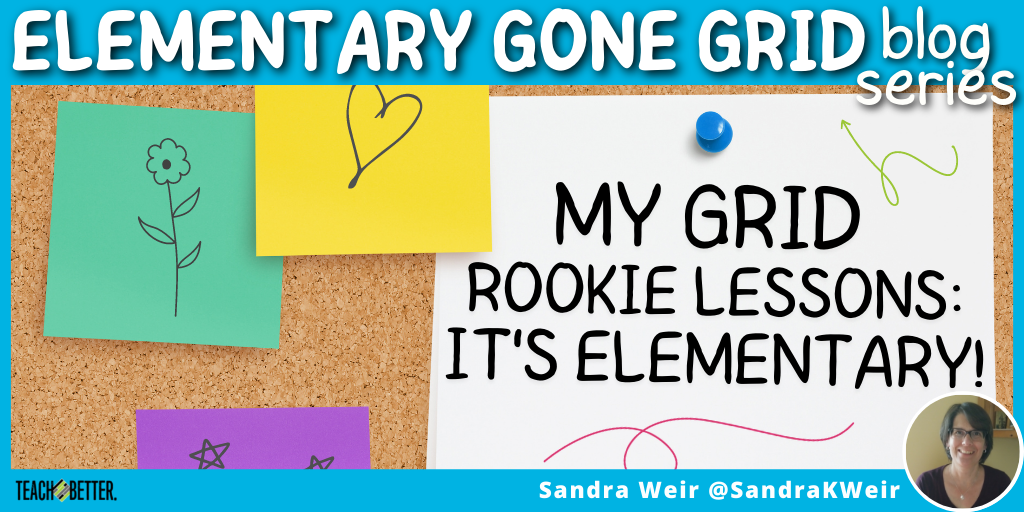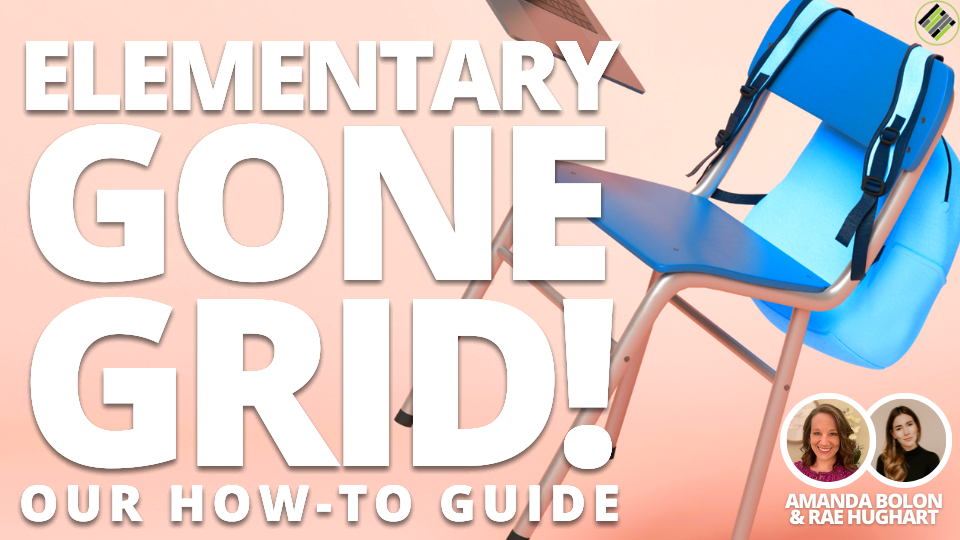TL;DR:
- Differentiating math instruction and meeting all of your learners’ needs can be challenging.
- The Grid Method changed this for me and my students.
- There have been many rookie mistakes made, but I continue to grow and so does my class.
I confess to being an elementary Grid Rookie. Our elementary schools in Québec include Grades K through six. In October of 2019, it was my first year back in Grade 6 after ten years working with younger students. I taught English, math, and ethics to two different elementary groups as part of our school’s French-English bilingual program. Of the 52 students in my classes, more than twenty had Individual Education Plans. Eight of those plans featured modifications in math. The rest had numerous necessary accommodations. Most of our students struggled in French class on their “other” days. Because of this, the aide assigned to sixth grade spent most of her time in my teaching partner’s class.
Before I Began
Math was my biggest challenge. A huge Ministry of Education exam (four days of calculation skills, reasoning, and complex problem-solving) was planned for June, and many of my students had just failed their second unit test. I had four distinct programs going, in keeping with the modified IEP goals and the regular program. I couldn’t see how I…or the kids…could make it until June, much less obtain the kind of results the Ministry expected on our final. I sat down with my laptop and, somewhat bitterly, typed “How to teach math better” into my Google search engine. The Teach Better website was my first hit.
A Grid Rookie Is Born
On the site, I navigated to the Grid Method. The self-paced nature of the method appealed to me immediately. This could allow my students who were ready to move ahead at the pace set out by our school math team! It could eliminate the need to provide a completely different program for half of my students on modified programs! The Grid Method could ensure the accommodations for my adapted students were always in place and give me the time I needed to work with any of the kids who needed reteaching!
The Grid Method could ensure the accommodations for my adapted students were always in place and give me the time I needed to work with any of the kids who needed reteaching! Click To TweetI won’t pretend I did the Teach Better Academy free course the same day, but I can honestly say I went back to the course the following Saturday and completed it in one afternoon. I admit to only watching the videos that first time, but it was a glimmer of hope at the end of a difficult week. After I finished, I created a (very rough) grid for my next unit, and my class and I were hooked.
Two Years Later
I definitely had a journey ahead of me. My first grids were messy and left a lot of room for improvement. This is my third year using the Grid Method in my math classroom, and I am still learning. I have a combined Grade 5 and 6 class this year, which could have meant the traditional “teach one group, assign work to the other” model. Given my current class profile, which includes a high proportion of students with challenges, that simply was not going to work. I took an Intro Grid course with Teach Better this past summer to increase my skills and help get my students used to the method. Then, I was fortunate to have some amazing coaching from Chad Ostrowski on how to make one math grid work for both grade levels, right from the beginning of the year.
At first, I was unsure whether the Grid Method could work for elementary students. Now, I don’t know how I could ensure student progress without it! Here are some of the rookie lessons I continue to learn on my own path to mastery:
Grid Rookie Lesson #1: Spend lots of time planning your grids.
What I did:
I thought I knew what to do after my Saturday video marathon that first desperate week. I built what looked like a grid to me. It was self-paced…sort of. I did include a mastery check at the end of each level. But my first “grid” was basically a sequential list of the activities I’d always done, with teaching videos added. I thought my elementary students, half of whom had identified challenges, couldn’t handle higher-level thinking if they didn’t have me guiding them directly every step of the way. Because of this, my stronger students sailed through the unit before I could blink.
What I do now:
When I plan a unit, I use the templates on the Teach Better website. It’s helpful to rewatch the training videos (a lot!), especially on this new adventure of two grades, one grid. I pay attention to my provincial standards and only teach those concepts through the grid. Making sure I scaffold my students’ learning by including the basics they need at the very beginning of each unit is a game-changer.
Grid Rookie Lesson #2: Train your students.
What I did:
I was so excited to start my first grid that I jumped straight into it on a Monday morning. There was a lot of talking on my part that first morning. As an experienced educator, I should have known better, of course, but we all get caught up sometimes! I gave the kids very little time to practice navigating their new grid and almost no time to practice their independent skills. These are upper elementary students. and I assumed too much!
What I do now:
I took the Intro Grid Course with Rae Hughart this past summer. Rae taught a group of us how to create an introductory practice grid, and my students used this at the beginning of the school year to practice the skills they would need to be successful in their use of the grid. With academics set aside for the first week, the kids were free to focus on how the grid worked. They learned how to use our classroom progress board and how important it was to rewatch a video if they didn’t understand a concept. Importantly, the students learned expectations for how to complete and hand in a piece of work. I learned how to make my grid more visually user-friendly for my particular group of students. A practice opportunity like this would have been the best way to begin in 2019, especially in an elementary setting.
Grid Rookie Lesson #3: I can’t be everywhere.
What I did:
I scheduled a lot of conferences and teacher checks throughout my grids, so I could “stay in control.” Instead, I ended up getting completely overwhelmed. Sometimes, I had three or four students waiting for conferences and even more waiting for me to check their work. This not only interrupted the kids’ momentum but made the 1:1 conference moments more rushed and less special.
What I do now:
I take my time when planning each grid, and I have learned to make self-checking activities wherever possible. This has allowed all of us to enjoy the learning process without feeling rushed or pressured. I am a resource for my students in a new way, so it’s important that my time be spent accompanying them on their learning journey, not just correcting.
[scroll down to keep reading]Grid Rookie Lesson #4: Get feedback.
More Grid Rookie lessons are in my future, and I am expecting to continue to grow as a teacher. To help this process along, I gave my students their mid-year “Class So Far” survey this past week. I asked what was working for them and what they would change. These quotes, from some of my real-life students, say it all:
I like how we have the grid in math, it’s more fun than to just explain an entire math problem then pass out worksheets.
I like math class because there are so many different things to do in math and there’s always a challenge. In math, you can always improve and be better than you were before.
The grid work is a mix of all kinds of math and I enjoy that, also you can work at your own speed.
I like doing different stuff. And I can do it as fast as I can and I can go as slow as I need.
I get to work at my own pace and also I like doing math in general this year. I just find it’s fun.
The fun is not limited to the kids! I continue to learn how to make my grids work better every day. Still, the feedback above shows that we are definitely on the right track, and we are enjoying the ride. Together.
About Sandra Weir
Sandra Weir lives in Québec, Canada. She has taught every grade from Junior Kindergarten to Grade Eight. Sandra is currently a Grade Six English and Math teacher. She is a wife, mom to three wonderful adults, and a definite dog person.





